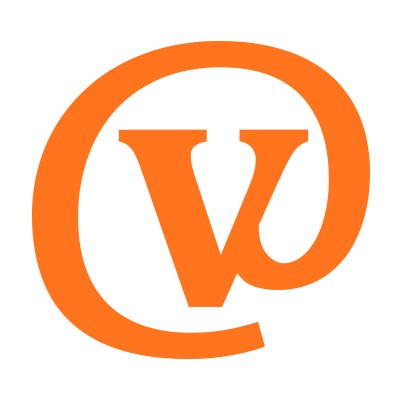Sometimes it takes a crisis to spark a burst of innovation. The 20th century’s terrible wars unleashed advances in computer science, aviation and encryption. The space race between competing Cold War superpowers gave us insulin pumps, solar cells and laser eye surgery.
On other occasions, it is global collaboration that conspires to unleash a new high-tech wave, even if the full consequences of a new technology are not foreseen at the time of their conception: a modest ‘inter net’ project at CERN in 1989 spawned the web and changed our social and economic lives forever.
Ultimately, breakthroughs come when an urgent need aligns with the maturity of a field of scientific research: aviation, eye surgery and mRNA vaccines were one last push away from reaching escape velocity when a thrust of scientific energy propelled them into orbit.
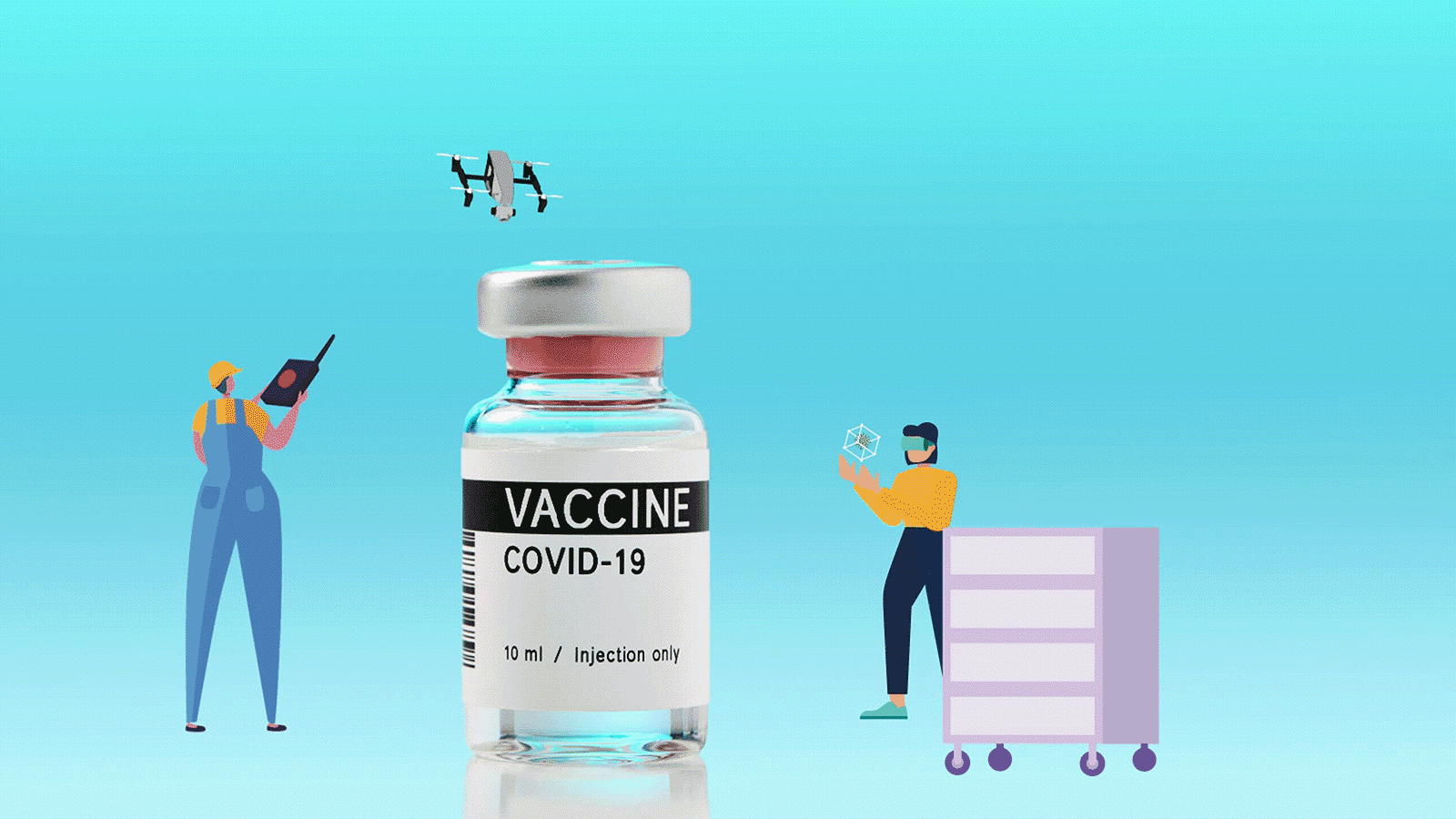
Going digital
The technology used to produce vaccines has been advancing for decades and took a giant step forward in response to the COVID-19 pandemic – mRNA vaccines being perhaps the most significant development.
New ways to make vaccines that do not need to be kept cool and to transport freeze-dried vaccines are also in the works, while ‘needle-free’ approaches to vaccine administration using nanopatches may be on the horizon. Children’s flu immunisations are already given by nasal spray in some European countries.
But vaccination could also be transformed by innovation outside the life sciences sector: in digital health, big data and artificial intelligence, for example.

As the Vaccines Today archive reveals, the use of drones in transporting vaccines was trialled by Gavi, UPS and Zipline (a drone company) in Rwanda long before the COVID pandemic. This initiative was further expanded to help deliver COVID-19 vaccines to remote regions of Ghana and could help to close health inequality gaps around the world.

David Sinclair, Director of the International Longevity Centre UK, says digital technologies can help keep track of immunisations and be used to improve adult vaccination rates.
‘COVID-19 has highlighted the value of better using data to monitor vaccination coverage, track the spread of communicable diseases, and identify vulnerable populations,’ he said. ‘We have seen huge progress made very quickly, but challenges lie ahead to avoid digital exclusion and to safeguard equality.’
Indeed, the pandemic prompted an acceleration in the use of online vaccine booking and reminder systems, as well as the development of digital certificates as proof of vaccination.
Long before COVID-19, there were a range of projects using digital immunisation records. In 2016, we interviewed Ruchit Nagar, a medical student who had developed a ‘digital necklace’ to record children’s medical records in remote parts of India. Five years later, the Yale graduate’s start-up was working with the Indian government to track COVID-19 vaccine uptake in Rajasthan.
Meanwhile in Europe, the idea of an electronic vaccination record has been on the agenda for over a decade, without a breakthrough. The challenge of collecting and connecting large pools of immunisation information from regional and national authorities across Europe appeared too great – until a digital COVID pass was created within months to enable a return to travel.
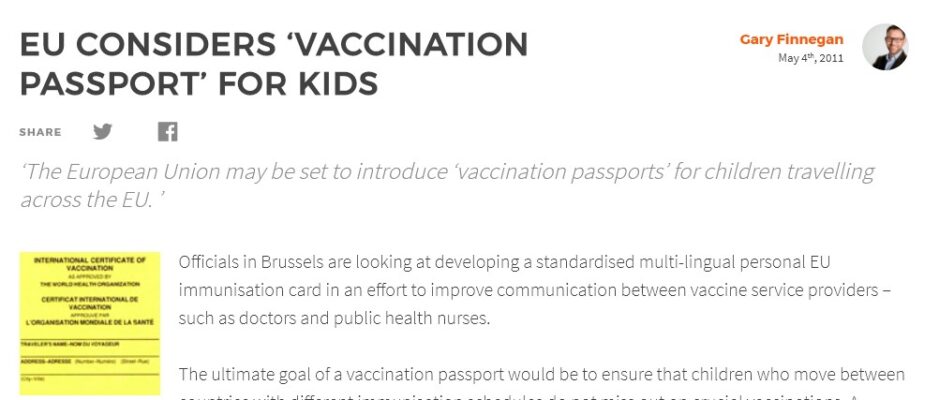
There were some isolated examples of excellence, notably in France where MesVaccins.net created personalised immunisation records for citizens. The initiative was so successful that the EU asked the team behind MesVaccins to develop a European Citizens’ Vaccination Card. ‘The EU Digital Green Certificate has paved the way for a digital vaccination card, both technically and in its daily usage,’ said François Kaag of MesVaccins.net.
Not only would this make it easier to move between European countries, it would give health chiefs an accurate picture of vaccination rates and highlight areas where additional measures are needed to address low uptake.
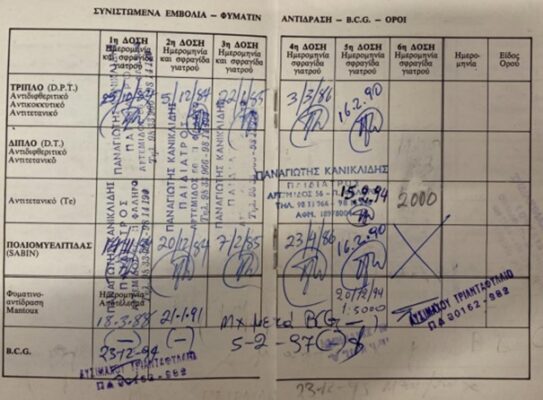
The UK’s well-established and highly-sophisticated immunisation information system helped the health service to hit the ground running when COVID-19 vaccines became available.
‘The roll out of the COVID-19 vaccine in the UK has been amongst the best in the world,’ said Prof David Salisbury, Associate Fellow of the Global Health Programme at Chatham House. ‘The speed and high coverage reflect the pre-existing familiarity and experience with vaccine campaigns – especially annual seasonal flu vaccine campaigns where the higher risk groups are the same – and the ability of the NHS to link patient details with health care providers.’
Prof Salisbury who is also a member of the Vaccines Today Editorial Board and a former Director of Immunisation at the UK Department of Health, said a successful vaccine campaign requires supply, people in place to administer vaccines and people willing to be vaccinated. ‘When all three coincide, success follows. The UK information systems for vaccinations contribute to facilitating that achievement.’
High-tech disease surveillance
The use of technology to track disease outbreaks and, ideally, respond before viruses spread in the wider community, was an area of interest long before COVID-19 became a feature of our daily lives.
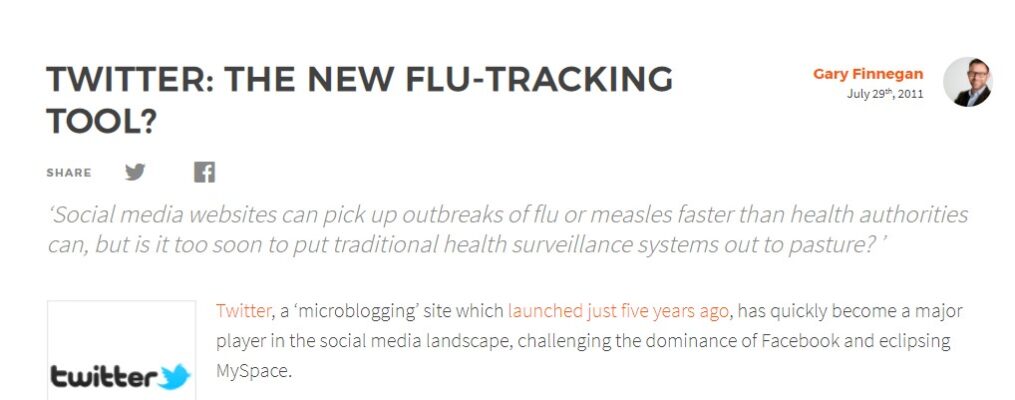
What about technology-enabled disease surveillance? Flu outbreaks have been picked up based on changes in Google search terms or tracking the trending search topics on Twitter. This has sometimes proven more efficient than waiting for doctors to report cases after patients have presented for treatment.
Time is of the essence when it comes to stopping the spread of infectious diseases. It’s no surprise that the pandemic has ushered in a wave of innovation in the use of technological tools designed to alert public health teams before local epidemics are out of control.
To track COVID-19 clusters, some countries have embraced symptom-tracking apps, such as ZOE which was developed by the UK’s NHS and King’s College London. The app encourages the public to report symptoms to help researchers build an early-warning system for imminent epidemics.
Once an outbreak of COVID-19 (or measles or flu) is identified, targeted vaccine programmes could be rolled out in disease hotspots. The next challenge would be communicating with the public and convincing people to have vaccines.
Digital persuasion
The rising of serious gaming promises to engage the public with health messages, and have a little fun along the way. Popular games such as Plague have been shown to increase knowledge and uptake of measles vaccines, while Finland has tested a game called Antidote as part of HPV awareness campaigns.

In the US, researchers have explored the use of virtual reality (VR) technologies to give people a more realistic experience of the consequences of opting out of vaccination.
‘One of the challenges we often face in the world of vaccination is getting people to imagine what it’s like to have an infectious disease and to transmit it to others,’ says Glen Nowak at the University of George. ‘What VR can do is reduce the need to rely on people’s imagination. Instead, you can give people an experience of how it feels it be infected with flu and protected against flu.’
The VR experience places people in a restaurant where they spread the flu virus to other people. Then they are shown two of these people – a child and an older man – in a hospital bed.
Of course, technology does not always work in favour of vaccination. Despite some of the promising technological advances, information technology has also been blamed for the rise in misinformation about vaccines.
For David Sinclair or ICL-UK, there are early signs that social media conversations are turning in favour of vaccination. ‘A decade ago there were no doctors on Facebook and YouTube, he said. ‘Now you have vaccine advocates engaging with the public using good science. Perhaps we were slow to react but it is starting to happen.’
In our next and final article in this series, we’ll look at the ‘infodemic’ and how to combat it.


